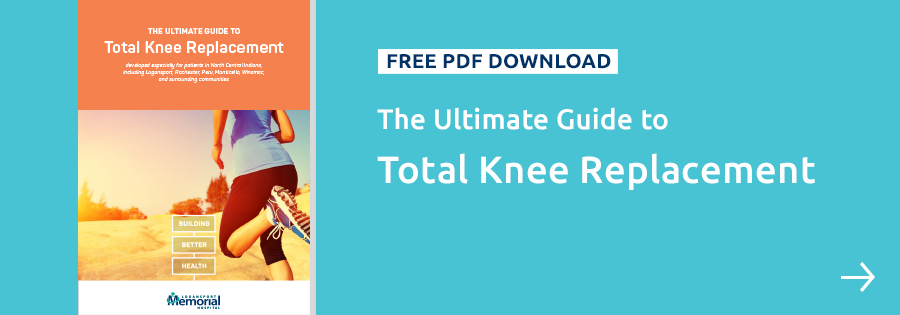When you’re suffering from chronic pain in both knees, getting around to do everyday activities like going to the store or walking your dog can feel unbearable.
For many knee pain sufferers, knee replacement provides the relief they need to get back to their everyday life without constant pain. When you’ve decided on knee replacement as an option, the decision becomes whether to have a single knee replacement (one surgery for each knee) or to have both knees done at once.
This blog article will discuss the advantages and downsides of double knee replacement and share what to expect after surgery.

Who qualifies for double knee replacement?
Patients who have tried other treatment options and lifestyle changes but still suffer from knee pain will often seek a joint replacement for relief.
Because of the increased risk of complications, most doctors will only perform double knee replacement on patients in good health.
The procedure is similar to single-knee replacement in its effectiveness, as both can reduce knee pain and improve knee function. It’s important to work with an orthopedic specialist to determine if you’re a good candidate for surgery.
The benefits of double knee replacement
A double knee replacement (also called bilateral knee replacement) occurs when both of a patient’s knees are replaced during one surgery.
This surgery has many benefits when compared to having two separate single knee replacements. Those benefits include:
- Less time off work. People who have a double knee replacement only have to take off work for one recovery period instead of two.
- Less time spent in the hospital. Double knee replacement patients only have to stay in the hospital one time, saving both time and money.
- Less time in physical therapy. Patients who have both knees replaced at once can rehab them both at the same time too.
- Decreased cost. Double knee replacement surgery and the associated out-of-pocket costs are 18-26% less than two separate surgeries.
Disadvantages and risks associated with double knee replacement
While most double knee replacement surgeries are successful and have limited risks, there are higher risks for some complications compared to single knee replacement.
Those risks include:
- Risk of more blood loss. It’s estimated that about 40% of people who have double knee replacement need a blood transfusion, compared to about 12% of people who get a single knee replacement.
- Stay in a rehabilitation center. About two-thirds of patients with double knee replacements need to go to a rehabilitation center, compared to just a quarter of single knee replacement patients.
- Prolonged anesthesia time. Replacing two knees takes more time than replacing one, so patients will spend more time under general anesthesia, increasing the risk of complications.
- No good leg to stand on. Recovery and getting around are more complicated when a patient doesn’t have a stable leg to rely on when standing, sitting, or using crutches.
Recovery and post-operative care
After double knee replacement surgery, your doctor will help you develop a rehabilitation plan to avoid complications and regain your strength and range of motion.
Within the first 24 hours after surgery, your care team may have you use a walker to take some steps if you’re able. Putting weight on your knees soon after surgery can often help patients recover more quickly. A physical therapist will guide you through the recovery process and customize a plan for you.
Your doctor and physical therapist will work together to decide when you’re ready to leave the hospital after surgery. They’ll want to see that you’re able to:
- Walk 150 to 300 feet with a walker or crutches
- Get in and out of bed on your own
- Get up and go down staircases
- Bend your knee 90 degrees
Your post-operative care is essential after double knee replacement surgery, and proper follow-up treatment can help you avoid any long-term problems.
One of the first things your physical therapist will do is have you stretch. Stretches and strengthening exercises will help you to regain your balance and control. They can also help you work through the pain and prevent scar tissue. Avoiding scar tissue will allow your body to move and stretch the way it should.
Get the guide to total knee replacement
Knee pain shouldn’t keep you from living a full life and doing the activities you enjoy.
Download our free guide to total knee replacement and make an appointment to see one of our knee specialists to learn more about the best options available for treating your knee pain.
You might also like:



